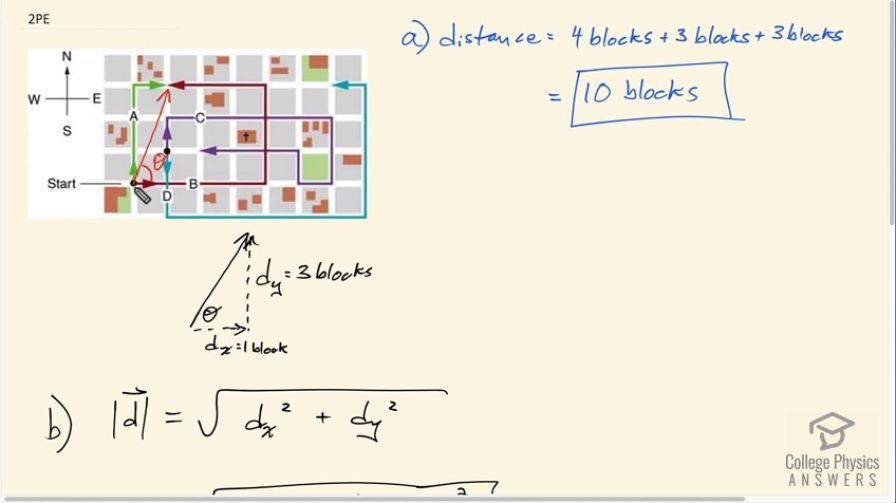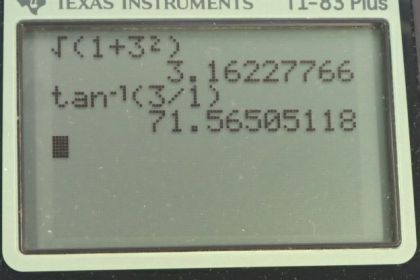Solution video
OpenStax College Physics, Chapter 3, Problem 2 (Problems & Exercises)

Calculator Screenshots
Comments
It's showing that '3.16 blocks' is incorrect. Is there another way of finding the answer? Thanks.
Hi Ashley95, which online homework system are you using? Maybe it's converting from blocks to meters by multiplying by 120 meters per block?
how do you determine the magnitude for path B?
hey how would do find the magnitude for path C?
Hi mary1, do you mean to find the magnitude of the displacement for path C? That would be the length of travel from the beginning to the very end: 1 block for path C.
Hope this helps,
Shaun
since we are going 3 blocks up and 1 block to the east I found the direction to be tan inverse of 1/3 ! why is theta not the angel inside the triangle ?
Did you get ? You're right! :) You're making the choice to measure the angle with respect to the vertical (North), which is correct, but unconventional. Your full answer would be , which is co-terminal with . These two answers are complementary (which is to say they add up to ), and reach the same position, but have different starting points (North vs. East respectively).
Hope this helps,
Shaun
In problem 1, you added path A blocks and multiplied it by 120m/1 block. Why did you not multiple by 120/1 for path B?
Hi shylaberger, thank you for the question. There's no good reason - I think it's because in problem 1 the question statement included the length per block explicitly, whereas in problem 2 the length per block is less prominent in the figure caption and I didn't notice it (even numbered problems were recorded about a year after odd numbered problems which is why the background color of the whiteboard is different. I eventually thought slightly yellow was less jarring than white).
All the best,
Shaun





